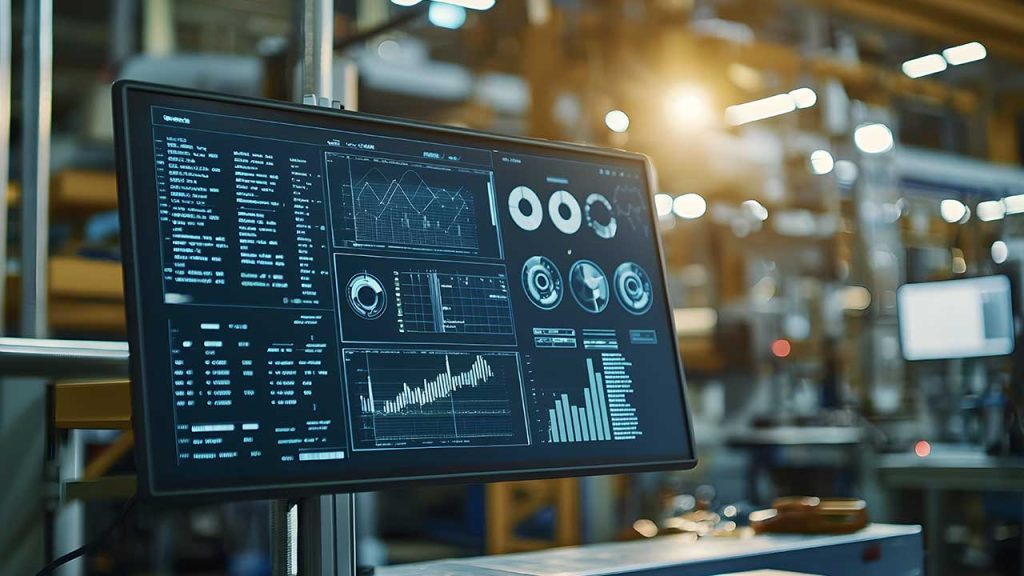Beyond Dashboards: Manufacturers Want Predictive Data, Not Pretty Graphs
Walk into any modern factory and you’ll see walls of dashboards. Vibration graphs, torque curves, temperature plots, even “traffic-light” alarms glowing red or green. It looks sophisticated — until a critical press fails and the line stops anyway.
That gap between visualizing and acting on data was the central theme of the panel “Predict, Prevent, Optimize: Real Results from Augmented Industrial Data”. The discussion brought together four experts with deep roots in manufacturing and industrial data:
- Benjamin Corbett, Solutions Engineer, InfluxData
- Helena Jochberger, Vice President & Global Industry Lead, Manufacturing, CGI
- Omid Givehchi, CTO Susteco, Bosch
- Jan Burian, Head of Industry Insights, Trask
Together, they tackled a series of questions manufacturers are wrestling with: how to move from dashboards to predictive action, how to measure ROI in a competitive global market, and how to integrate augmented data into existing systems without risking downtime.
From Visualization to Predictive Action
Question: Many plants collect vast amounts of time-series and contextual data, but struggle to translate it into timely, actionable decisions. What proven methods or tools help manufacturers move from simply visualizing augmented data to actually driving predictive and preventive actions on the plant floor?
Most dashboards today remain reactive. A pump only trips an alarm when vibration exceeds a threshold, by which point failure is already inevitable. The opportunity is in catching weak signals — micro-vibrations, slight temperature rises, subtle lubrication changes — long before alarms sound.
Achieving this requires the right infrastructure: industrial-grade time-series databases and open formats that make contextualization possible. Proprietary “walled gardens” might look polished, but they trap data and slow innovation. Predictive foresight depends on flexible, interoperable foundations.
ROI Isn’t Just Numbers, It’s Survival
Question: When augmented data is used to detect hidden patterns, improve load balancing, or reduce manual intervention, what metrics or KPIs are most effective for quantifying ROI — and how quickly can manufacturers expect measurable improvements?
This is where many pilots collapse. Without standardized, contextualized data, companies struggle to demonstrate results within the 12–18 months management usually expects.
But ROI in manufacturing isn’t a slide deck of KPIs. It’s about whether predictive approaches keep a factory competitive. Cutting downtime, reducing scrap, and preventing stoppages matter most when global rivals can undercut on labor or energy costs.
Ownership is critical here. ROI cannot sit with IT alone. Unless IT, OT, and business leaders are aligned, even accurate metrics won’t translate into meaningful decisions.
Integration Without Disruption
Question: What are some real-world examples of integrating augmented data layers — historical, metadata, and real-time — into existing systems in a way that minimizes downtime and operator retraining?
One food producer faced costly downtime when chocolate stuck in molds. Failures were rare, but each stoppage meant a lost day of production. By combining time-series signals with recipe and environmental context, engineers identified the overlapping conditions that caused the problem.
The fix didn’t require ripping out OT systems or retraining operators. It came from layering smarter analytics onto the infrastructure already in place. This is the model manufacturers should follow: overlay augmented data onto proven systems, minimize disruption, and build trust with operators who depend on stable processes.
The Thread That Connects
Each of these questions ties back to a single truth: manufacturers don’t need more graphs; they need foresight. Predictive signals instead of static alarms. ROI that measures competitiveness, not just cost savings. Integration strategies that protect uptime and operator trust.
And at the foundation of it all sits the time-series database — purpose-built to handle the velocity, volume, and precision that industrial environments demand. Without the right database infrastructure to capture, contextualize, and query machine data at scale, even the most sophisticated predictive models remain theoretical. The path from reactive dashboards to proactive foresight begins with getting the data foundation right.



